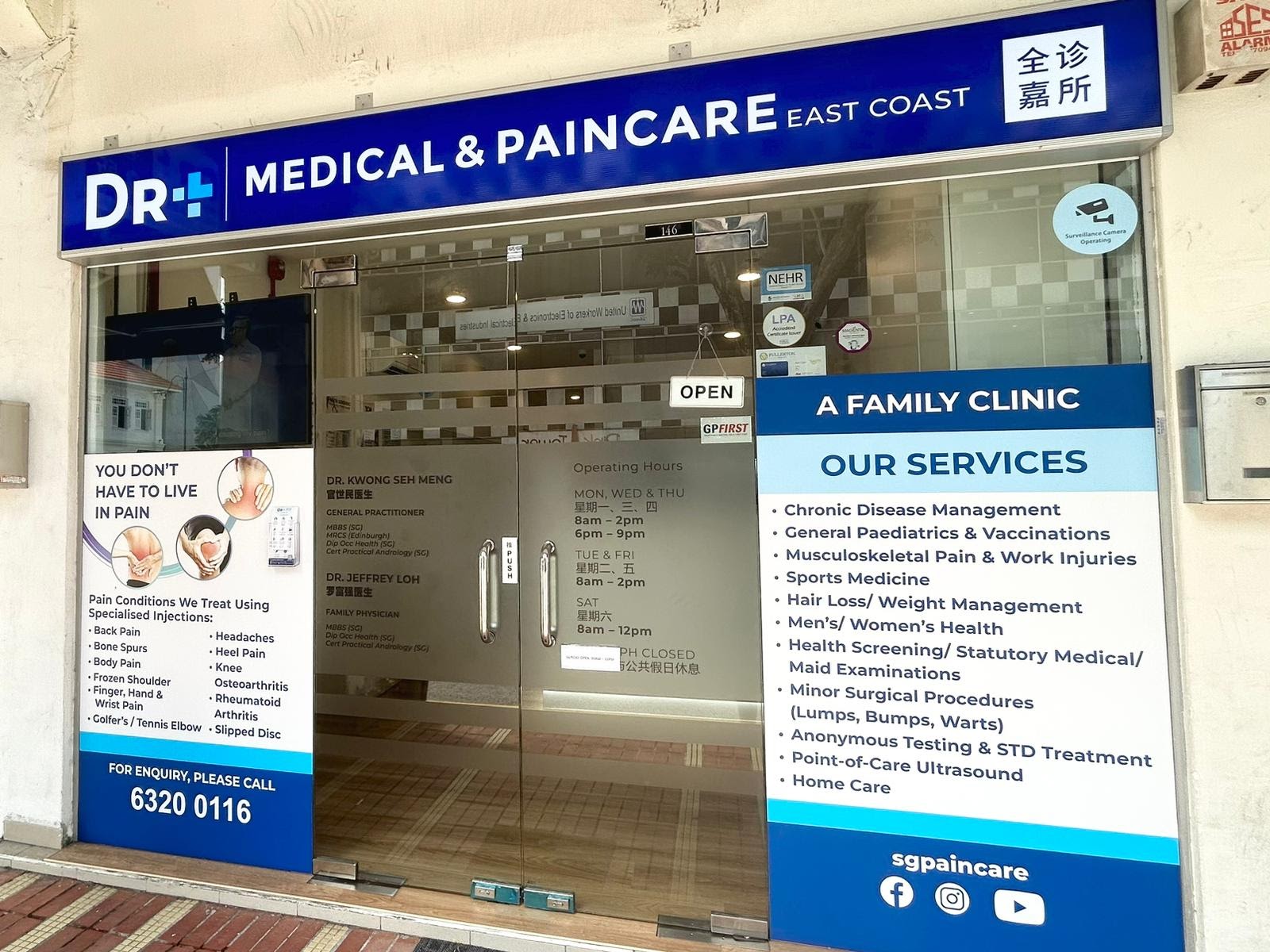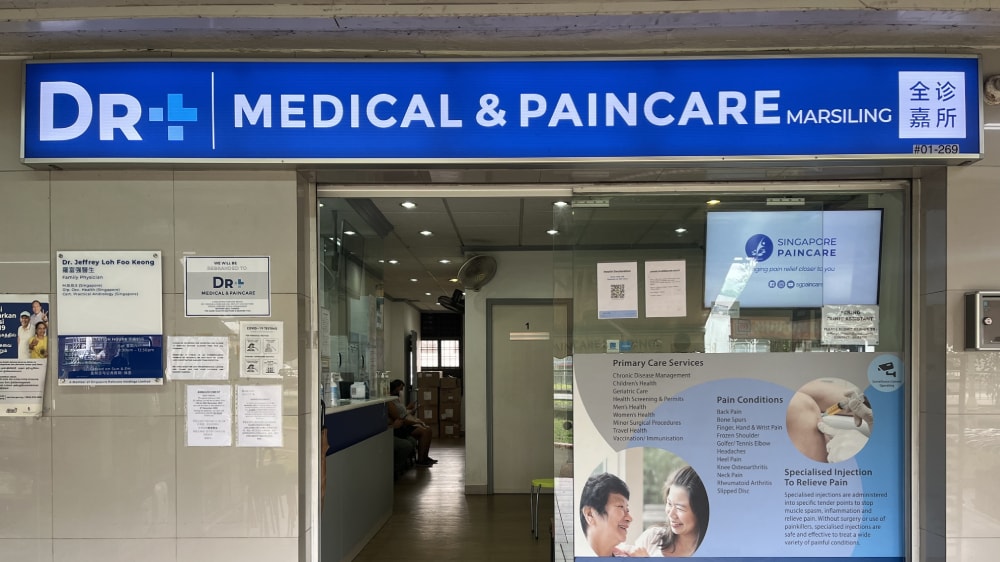Shoulder Pain

Shoulder Pain
Shoulder pain is a prevalent condition experienced by individuals of all age groups. The shoulder, a complex ball-and-socket joint, is susceptible to various injuries and conditions due to its wide range of motion and the intricate network of muscles, tendons, and ligaments that support it.
Common Causes of Shoulder Pain
Arthritis of the shoulder
Arthritis encompasses various types, with osteoarthritis being the most prevalent. Osteoarthritis manifests as joint swelling and stiffness due to prolonged wear and tear, potentially resulting from sports or labor-related injuries.
Overuse of the shoulder, common among athletes like baseball players, acrobatic gymnasts, and participants in racket games, may contribute to early degeneration of the shoulder joint.
It’s important to distinguish between degeneration and arthritis, as degeneration can occur without causing pain. In arthritic shoulders, inflammation leads to a natural reduction in shoulder movement. Over time, soft tissue within the joints may become further immobilised and stiffened, ultimately resulting in a decreased range of motion for the shoulder.
Tendinitis
Inflammation of the tendons in the shoulder, typically caused by overuse or repetitive motions.
Bursitis
Bursitis refers to the inflammation of the bursa, a soft tissue that provides cushioning between bones, tendons, and muscles near the shoulder joints. A healthy bursa facilitates smooth movement of muscles and tendons against each other during activity. Symptoms of bursitis resemble those of tendinitis and may be caused by it. When the bursa becomes inflamed, it can result in significant pain as tendons or muscles glide over the affected area.
Shoulder Sprain
A shoulder sprain involves injury to the rotator cuff muscle or ligament within the shoulder joint. Minor sprains may occur due to overuse or excessive stretching, while more severe cases can result in ligament tears. Small sprains may not be immediately evident, but a complete tear typically causes persistent, sharp pain and weakness. Traumatic events like car accidents or falls onto an outstretched arm often cause this injury. X-rays cannot detect this type of injury; an MRI is necessary to assess its severity.
Shoulder Girdle Syndrome/Personage-Turner Syndrome
Shoulder Girdle Syndrome, also known as brachial neuritis, is a neurological disorder characterised by sudden and severe pain in the upper arm and shoulder. Following the pain, weakness may develop in the muscles of the shoulder, arm, forearm, or hand, lasting from days to a few weeks.
The condition likely involves damage or inflammation to the brachial plexus, a network of nerves extending from the spine through the neck, into each armpit, and down the arms. Damage to these nerves results in muscle weakness.
Parsonage-Turner Syndrome is often misdiagnosed as cervical radiculopathy or cervical spondylosis. Although relatively uncommon, its underlying cause remains unidentified based on current research.
Shoulder Impingement Syndrome
Shoulder movement relies on the smooth gliding function of tendons and muscles over the shoulder joint. Impingement occurs when tendons are compressed by surrounding structures, such as bone spurs, resulting in pain described as sharp, transient, and episodic during shoulder movements. Patients may also experience weakness and restricted shoulder mobility.
The most common cause of impingement is the overgrowth of bony spurs on the acromion and its related joint, often due to shoulder overuse. This narrows the path of the supraspinatus tendon gliding through the sub-acromial space. Initially, this may cause tendinitis from constant irritation, potentially progressing to tendon tears and edematous swelling.
Symptoms and Diagnosis
Common symptoms associated with shoulder pain:
- Pain: Discomfort may be felt when pressing on the injured area or during movement, such as lifting the arm or removing clothing. Severity and location vary, ranging from mild to intense, and may affect one or both arms.
- Swelling and Tenderness: The injured area may be tender, accompanied by bruising or changes in skin color. Rapid swelling, common in cases of sudden trauma like car accidents or falls, may necessitate further treatment. Severe swelling can result in a shiny, warm appearance with loss of skin texture.
- Instability: Severe shoulder sprains and degenerative conditions like osteoarthritis may lead to joint instability and weakness. Increased instability raises the risk of dislocation, accelerated degeneration, and painful movement.
-
Diagnostic methods: A thorough physical examination by a doctor is the primary method of diagnosis. This can be supplemented by:
Physical examination: Assessing the shoulder’s mobility, strength, and any signs of deformity.
- X-rays: Providing a detailed view of the bones in the shoulder.
- MRI: Offering a comprehensive image of both the bones and soft tissues, helping identify any abnormalities or tears.
Struggling With Persistent Pain?
Consult one of our DR+ today for a detailed consultation & personalised treatment plan.
Treatment Modalities
Pain Medication
This involves the use of medications such as Non-Steroidal Anti-Inflammatory Drugs (NSAIDs), opioids, and other specialised medications designed for pain management. The type and dosage are tailored to the individual’s condition and medical history.
Myospan
Minimally invasive treatments aim to effectively relieve common pain conditions by targeting pain sources.
- Coreflex Injections: Typically contain a corticosteroid and are used for inflamed joints or tissues.
- Platelet-Rich Plasma (PRP) injections: Utilise own platelets to promote healing in damaged tissues.
- Intra-Articular Injections: Most commonly used to treat osteoarthritis in the hip or knee, but they can also be given in other joints, including shoulders, wrists, ankles, hands, and fingers.
For chronic pain conditions originating from spinal issues, Neurospan can be performed by our team of pain specialists from Singapore Paincare Center.
Prevention and Management
- Strength training: Regular exercises targeting the shoulder muscles can enhance stability and reduce the risk of injuries.
- Maintain proper posture: Ensuring a correct posture, especially during activities like lifting or working at a desk, can prevent undue stress on the shoulder.
- Avoid repetitive strain: Limiting repetitive overhead activities and taking regular breaks can help in preventing conditions like tendinitis.
- Warm-up before activities: Engaging in a proper warm-up routine before sports or strenuous activities can prepare the shoulder muscles and reduce the risk of injuries.
Importance of early diagnosis and treatment
- Timely intervention: Seeking medical advice at the onset of pain can lead to a quicker diagnosis, preventing complications and chronic conditions.
- Adherence to treatment: Following the recommended treatment plan, whether it involves physiotherapy exercises, medications, or rest, can significantly improve recovery outcomes.
- Regular check-ups: Periodic consultations with doctors can help monitor the progress and make necessary adjustments to the treatment.
Frequently Asked Questions
Are there specific exercises I can do at home to alleviate mild shoulder pain?
Yes, there are several exercises designed to relieve shoulder pain, such as pendulum stretches and wall push-ups. However, consult with our doctor before starting any exercise regimen to ensure they are suitable for your specific condition.
How long does it typically take to recover from a rotator cuff injury?
Recovery time for a rotator cuff injury varies based on the severity of the injury. Mild strains may heal within a few weeks, while more severe tears might require surgical intervention and a longer recovery period of several months. In cases of persistent pain, the use of Coreflex or Platelet-rich Plasma Injections can be beneficial in alleviating discomfort and reducing inflammation.
Can poor posture lead to chronic shoulder pain?
Yes, maintaining poor posture, especially during activities like sitting at a desk or lifting heavy objects, can put undue stress on the shoulder muscles and ligaments, potentially leading to chronic pain and other complications.
Are there any alternative therapies effective for shoulder pain?
Some individuals find relief from shoulder pain through alternative therapies such as acupuncture, chiropractic care, or massage therapy. It’s important to discuss with a doctor before trying any alternative treatments to ensure they are safe and appropriate for your condition.
Can dietary changes or supplements help in managing shoulder pain?
Certain dietary changes, like including anti-inflammatory foods or taking supplements such as omega-3 fatty acids, might help reduce inflammation and alleviate pain. However, consult with a nutritionist or doctor before making significant dietary changes or starting any supplements.
Our Clinics
- Mon, Tue & Thu: 9am to 1pm, 2pm to 4pm, 6:30pm to 9:30pm
- Wed & Fri: 9am to 1pm, 2pm to 4pm
- Sat: 9am to 1pm
- Closed on Sun & PH
-
(Kindly note that clinic’s last registration is 15mins before closing time.)
- Mon, Wed, Thu: 8:00am – 2:00pm, 6:00pm – 9:00pm
- Tue & Fri: 8:00am – 2:00pm
- Sat: 8:00am – 12:00pm
- Sun: 10:00am – 1:00pm
- PH: Closed
#01-54 The Midtown, Singapore 533971
- Mon to Fri: 8:00am – 12:00pm, 1:00pm – 3:00pm, 6:00pm – 9:00pm
- Sat: 8:00am – 12:00pm
- Sun & PH: Closed
988 Upper Serangoon Rd, Singapore 534733
- Mon to Fri: 8:30am – 2:30pm, 6:00pm – 10:00pm
- Sat & Sun: 8:30am – 12:30pm
- PH: Closed
-
(Kindly note that clinic’s last registration is 15mins before closing time.)
Singapore 730018
- Mon: 8:00am – 9:00pm
- Tue – Fri: 8:00am – 4:30pm, 7:00pm – 9:00pm
- Sat: 8:00am – 12:30pm
- Sun & PH: Closed
-
Kindly note that clinic’s last registration is 15mins before closing time.
-
(Last registration timing – Mon: 8:45pm, Tue – Fri: 4:15pm & 8:45pm, Sat: 12:15pm)
Thomson Imperial Court, Singapore 574424
- Mon to Wed: 8:30am – 10:00pm
- Thu: 8:30am – 3:00pm, 6:00pm-9:30pm
- Fri: 8:30am – 6:00pm
- Sat & Sun: 9:00am – 3:00pm
- PH: Closed
-
(Kindly note that clinic’s last registration is 15mins before closing time.)
- Mon, Wed & Fri: 8:30am – 12:30pm, 1:30pm – 4:30pm, 6:00pm – 9:00pm
- Tue & Thu: 8:30am – 12:30pm, 1:30pm – 4:30pm
- Sat: 8:30am – 12:30pm
- Closed on Sun & PH
-
(Kindly note that clinic’s last registration is 15mins before closing time.)
#01-95, Singapore 570121
- Mon to Fri: 8:00am – 5:00pm, 6:00pm – 9:00pm
- Sat & Sun: 8:00am – 1:00pm
- PH: Closed
-
(Kindly note that clinic’s last registration is 15mins before closing time but may close earlier if the queue is unusually long.)
Need Advice On Your Condition?
Please fill out the form and we will be in touch with you shortly.








